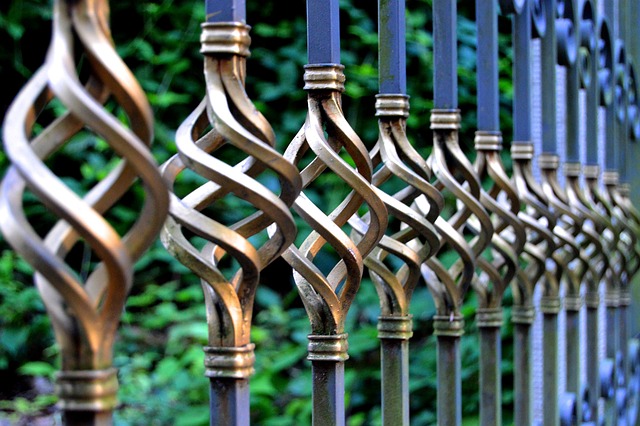Featured

A fence offers as greater than simply a boundary; it provides privacy, security, and boosts the aesthetic allure of your property. Nevertheless, like any kind of outdoor structure, a fence will undoubtedly deal with deterioration from the elements and age. While routine maintenance can prolong the life of your fence, there comes a time when repair work no more are enough, and it's time to consider replacement. Exactly how do you recognize when your fence is beyond conserving? Below are some key indications that your fencing might need to be replaced.
- Noticeable Damages or Use. One of one of the most apparent indications that your fence is nearing completion of its life expectancy shows up damages. This could include splits, divides, bending, or damaged sections. Wooden fencings are especially susceptible to splitting or splintering gradually, while vinyl fencings can develop splits. Metal fencings, like chain-link or wrought iron, can likewise end up being damaged with rust or bent messages. If the damage is structural or widespread, fixing private areas might not be sufficient, and replacing the fencing becomes essential.
- Rot and Degeneration. If you observe that parts of your fencing really feel soft to the touch or if you see mold or fungus expanding, it's an indication of rot. Minor rot can occasionally be repaired, substantial degeneration, specifically near the base of fence blog posts, can compromise the honesty of the whole fencing.
- Leaning or Tilting. A leaning fence is a clear indication that something is wrong with its architectural support. If the fence proceeds to lean despite attempts at modification, it may be time to change the afflicted areas or the entire fencing.
- Rust or Corrosion (For Steel Fencings) Particularly one made of functioned iron or steel, corrosion or corrosion can deteriorate its structure if you have a steel fence. While small corrosion can frequently be eliminated and dealt with, substantial corrosion that jeopardizes the fence's stability is a sign that substitute is essential. It can make the fencing hazardous or unattractive if the corrosion has actually spread out dramatically or weakened the metal. It's much better to replace a heavily rusted steel fence than to proceed trying repair work.
- Parasite Infestations. Wooden fencings are a common target for bugs like termites, woodworker ants, and rats. In instances where the damage is severe, the affected fencing posts or boards may need to be replaced to restore the fence's security.
- Difficulty Maintaining the Fencing. If you locate on your own constantly making repair work to the same locations of your fencing, maybe a sign that the fence is past its prime. Fencing upkeep can be pricey and taxing, especially when fixings are no more reliable. It's time to take into consideration changing the fence altogether if you're spending even more money on covering up old areas than you would on a complete replacement. A brand-new fence will certainly supply more lasting worth and lower the regularity of repair services.
- Age of the Fencing. While the life-span of a fencing can differ depending on the climate, product, and area conditions, the majority of fencings last between 15 and 20 years. If your fence is approaching or surpassing its anticipated life expectancy and revealing signs of wear and tear, it may be time to replace it.
- Outdated Look. Occasionally, a fence just ends up being outdated, no more matching the design or demands of your property. In time, your taste, the landscape, or the design of your home may change. If your fencing no longer enhances your building or meets your needs-- such as personal privacy, protection, or appearances-- it might be time to take into consideration a replacement. New secure fencing products and styles are offered that offer boosted durability, capability, and aesthetic appeal.
- Fence No More Offers Its Objective. Your needs for a fencing can evolve gradually. For example, if your original fencing was created for decoration or to maintain animals included, today you require more personal privacy or security, a replacement may be essential. A fence that no longer serves its designated purpose is not just less efficient however can also detract from the total worth of your property. In such instances, changing the fencing with one that fulfills your present needs is the very best option.

Conclusion. If you discover any of the indications detailed above-- visible damage, rot, leaning, pest problems, or an out-of-date appearance-- it may be time to replace your fencing. Replacing an old, worn-out fence can enhance the general worth of your building, enhance protection, and give your backyard a fresh look.
Latest Posts
Maintain Your Rug Looking Its Finest with Easy, Expert Treatment
Published Apr 20, 25
1 min read
Full Circle Strategic Marketing - Collaborate with Our Proven Strategies for Unstoppable Growth
Published Apr 20, 25
2 min read
Sports, Flavor, and Enjoyable-- All in One Location
Published Apr 20, 25
2 min read
More
Latest Posts
Maintain Your Rug Looking Its Finest with Easy, Expert Treatment
Published Apr 20, 25
1 min read
Full Circle Strategic Marketing - Collaborate with Our Proven Strategies for Unstoppable Growth
Published Apr 20, 25
2 min read
Sports, Flavor, and Enjoyable-- All in One Location
Published Apr 20, 25
2 min read